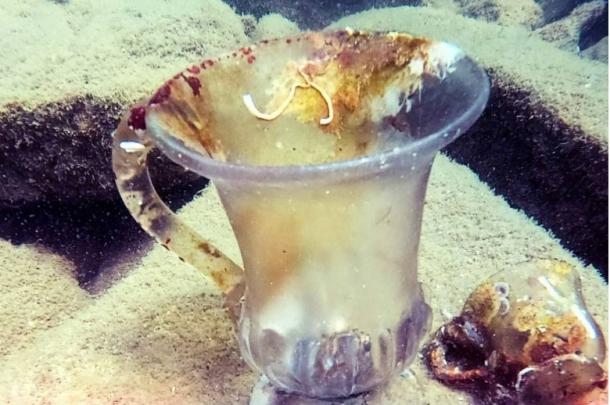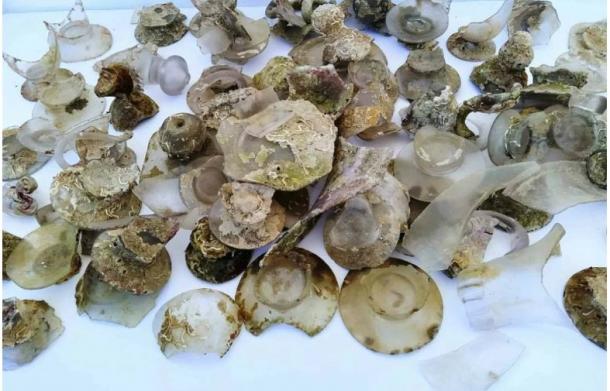Introduction
In the summer of 2024, a team of archaeologists and historians embarked on an extensive underwater survey in Chengene Skele Bay, near the city of Burgas on the Bulgarian Black Sea coast. What they uncovered was a veritable treasure trove of historical artifacts and insights that shed new light on the region’s rich maritime past.
From the discovery of a cache of exquisite Venetian glass vessels to the unearthing of Hellenistic pottery and Roman artifacts, this expedition has captivated the attention of scholars and the public alike. Join us as we delve into the fascinating findings that are rewriting the history books and providing a glimpse into the vibrant maritime heritage of Bulgaria.

The Glass Vessel Cache: A Venetian Shipwreck Revealed?
One of the most remarkable discoveries made during the 2024 underwater survey was the uncovering of a vast collection of glass vessels, believed to date back to the late 16th or early 17th century. Situated at a depth of 2 to 2.5 meters, this 15-decare (3.7-acre) zone yielded an astounding 112 new glass items, adding to the already significant collection of 310 vessels found in previous years.
The hypothesis that these glass artifacts were part of a ship’s cargo lost during a storm is supported by the discovery of iron anchor chain fragments and highly fragmented ceramic vessels from the Late Middle Ages and Renaissance era. This rich collection offers invaluable insights into the glass trade and production practices in the Balkans during this period, potentially tracing the origins of these exquisite objects to the renowned Murano workshops of Venice.
Hellenistic Pottery and Roman Artifacts: Uncovering Centuries of History
The second zone explored by the team revealed a treasure trove of Hellenistic period pottery fragments, located in shallower waters ranging from 1.5 to 5 meters deep. This 100-square-meter area also contained a small lead rod from the Roman era and a stone fishing weight, suggesting a diverse historical use of the bay over many centuries.
These findings underscore the significance of Chengene Skele Bay as a center of activity for various civilizations, from the Hellenistic period to the Roman era and beyond. The rich ceramic assemblage provides a glimpse into the trading and cultural practices of these ancient societies, offering archaeologists a valuable resource for further research and analysis.

The Fortified Hellenistic Center and Underwater Site
In an area east of Cape Chiroza, the team’s previous surveys had already uncovered a substantial fortified Hellenistic center on the headland overlooking the bay, with a large underwater site located in the nearby waters. Despite the challenges posed by low visibility and a large deposit of sand, the 2024 expedition managed to uncover additional fragments of Hellenistic building pottery and stone war cores, further enhancing our understanding of this important historical site.
The discovery of this fortified center underscores the strategic importance of Chengene Skele Bay, which likely served as a hub for trade, commerce, and military activities during the Hellenistic period. The underwater site, with its wealth of artifacts and architectural remains, promises to yield even more insights as future excavations continue.
The Historic Chengene Pier and the Monastery Port
The southeastern end of the bay, near the historic Chengene Pier, offered a glimpse into the bay’s past as a bustling harbor. This site, often mentioned in European diplomatic records from the 18th and 19th centuries, revealed a concentration of late antique and medieval amphora fragments, including parts of Gunsenin type III amphorae dating back to the 12th-13th centuries.
Similarly, the fifth zone, known as the monastery port near St. Anastasia Island, added another layer to the historical narrative. Underwater inspections in this area uncovered fragments of ceramic vessels from the 18th-19th centuries, late antique amphorae parts, and an iron horn from an anchor, aligning with historical accounts of a thriving monastery with significant maritime activities.
These findings underscore the long-standing tradition of loading and unloading goods in Chengene Skele Bay, highlighting its historical economic importance and the vital role it played in the region’s maritime trade and commerce.
Conclusion: Unlocking the Bay’s Untold Stories
The 2024 underwater surveys in Chengene Skele Bay have significantly enriched our understanding of the region’s historical and archaeological heritage. From the discovery of exquisite Venetian glass vessels to the unearthing of Hellenistic pottery and Roman artifacts, these findings have opened new avenues for research into the trade, production, and cultural practices of past civilizations.
The wealth of artifacts and architectural remains uncovered in the bay underscores its strategic importance as a hub of maritime activity, serving as a center of trade, commerce, and even military operations throughout history. As the artifacts are conserved and displayed at the Archaeological Museum of Burgas, the public will have the opportunity to connect with the rich history hidden beneath the waves, sparking new interest and appreciation for Bulgaria’s remarkable underwater heritage.
The Chengene Skele Bay surveys have demonstrated the immense value of underwater archaeology, revealing untold stories that have the power to rewrite history and deepen our understanding of the past. As the research continues, we can expect even more fascinating discoveries that will shed light on the vibrant maritime legacy of this captivating region.

